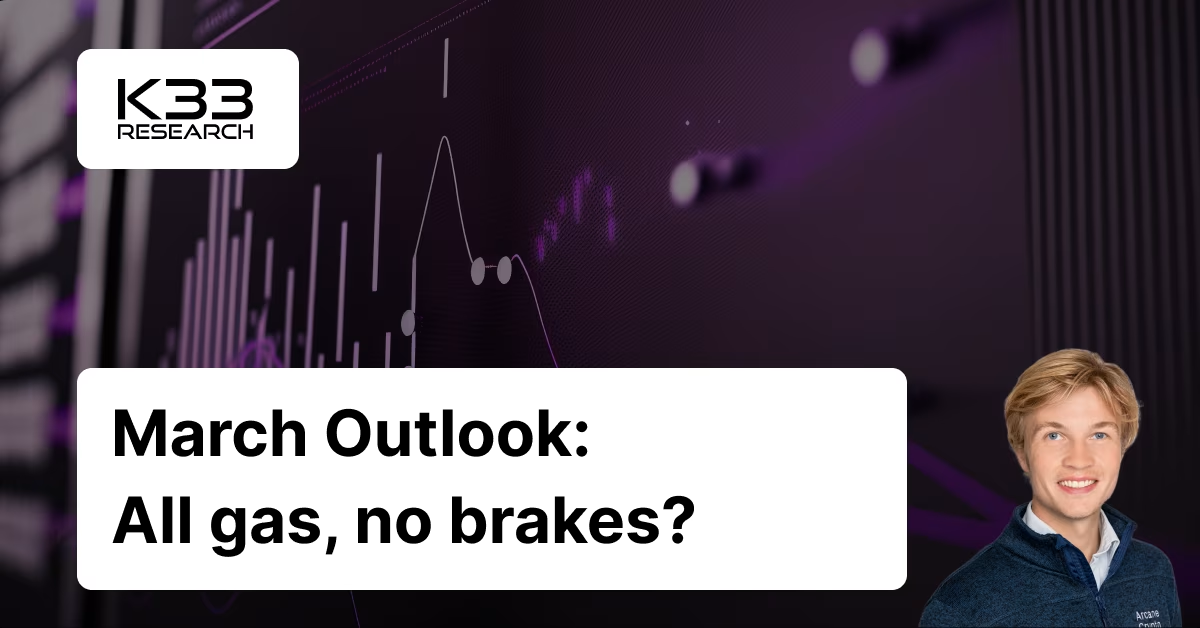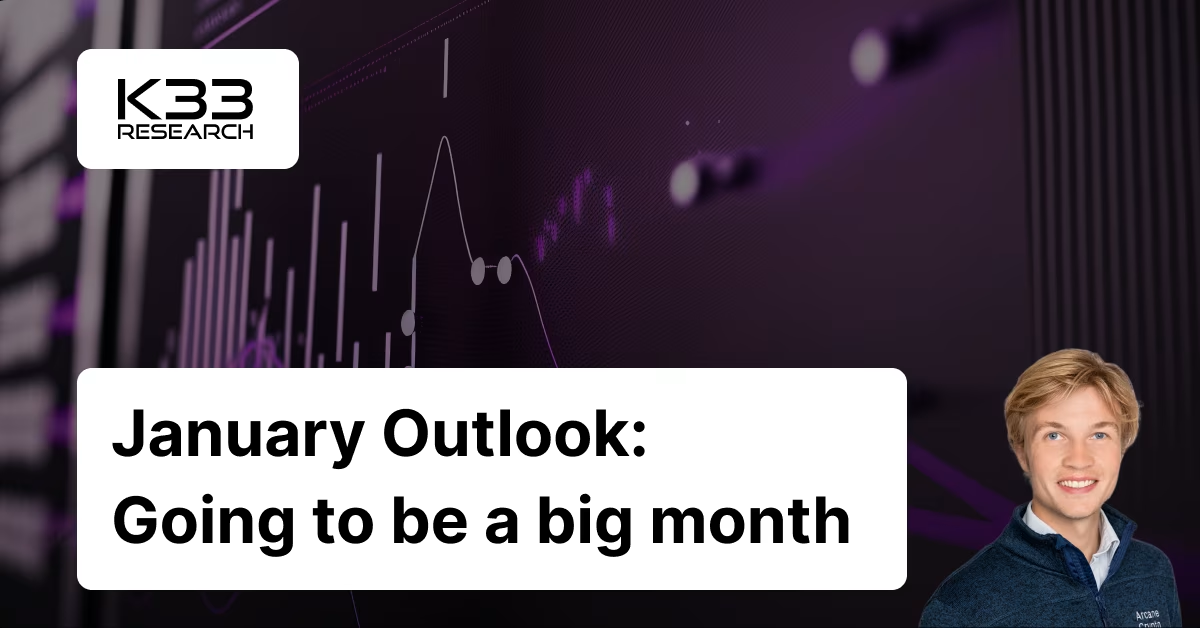Mid-April Outlook: All eyes on the halving
Accumulate, hold, and wait. The halving and new ETF waves will occur, but a slowing block production and lengthy consolidation increase the risk of short-term adverse flushes lower, favoring long spot exposure for the time being. Accumulate, hold, and wait. The halving and new ETF waves will occur, but a slowing block production and lengthy consolidation increase the risk of short-term adverse flushes lower, favoring long spot exposure for the time being.
We’re already 12 days into April, meaning that this outlook is long overdue. An extended Holiday in China explains the delay – future monthly notes will continue to be published on the first Tuesday of the month from here on out. Enough chitchat, let’s get to it.
Bitcoin has now consolidated for a month. Volatility is trending lower; froth has eased somewhat as funding rates have retraced to slightly healthier levels, and the halving is near. Objectively, the market is gradually becoming more attractive, with hurdles to overcome.
In April, one happening absorbs our and the market’s attention – the bitcoin halving. On Friday, April 19th, the halving is expected to take place. How will the market react?
The halving could be destabilizing in the short term
After the halving, some miners are due to be unprofitable, despite BTC’s strong march higher. Inevitably, some miners will seize operations as the cost burden outpaces the revenues. This will most likely lead the hashrate to decline temporarily slowing down Bitcoin’s block production rate, which could spark uncertainty in the market.
In 2020, BTC’s block production remained slow for a month as BTC’s difficulty readjusted to the declining hashrate. The period saw BTC trade in a stable range. The stability happened despite reduced selling pressure from miners and bullish headlines stemming from Paul Tudor Jones announcing his BTC purchase.
The halving is, by all accounts, a known event without any significant layers of uncertainty once it occurs. 450 fewer BTC sold a day following the halving is a meager drop in the ocean; it’s the compounding effects in the months that follow where a positive drift may occur.
But the halving is positive in the long term
Thus, the immediate aftermath of the halving could face stagnation and a mild sense of fear and uncertainty. Still, as time progresses, the reduced sell-side pressure stemming from the halving is material. Miners will sell 164,250 fewer coins on a yearly basis. Historically, this compounding reduction of sell-side pressure has caused a steady drift higher, and I expect the present to mirror the past, meaning that I view the coming months as solid months for aggressive accumulation.
Relentless GBTC outflows and steady newborn flows -> Net zero effect
ETF flows have stabilized in the past month. GBTC outflows remain high, and GBTC is now a few days away from having halved its BTC holdings since the conversion. Flows to the newborn stay steady, but less excessive than a few months back.
These flows will run in waves. The gates to BTC exposure are opening slowly, and once the ETFs gradually overcome due-diligence burdens and become accessible on more broker-dealer platforms and RIA networks, flows could again accelerate. It’s hard to identify *when* this will happen, but it will happen eventually, and once it happens, the odds are directionally in favor of holders and accumulators.
ETFs are spreading its wings; Hong Kong is next
Per recent headlines, Hong Kong spot ETFs seem to be a sure thing. This is a compelling story; simplified BTC exposure is expanding, and Hong Kong and potentially mainland Chinese may eventually get access to this market.
Still, while the story is compelling, the fact of the matter is that current ETF flow data indicates moderate interest in BTC vehicles based in Hong Kong. Two futures-based BTC ETFs have been live since late 2022. Together, they hold a BTC exposure slightly below 2,000 BTC. In other words, Hong Kong futures-based ETFs hold 2.2% of the exposure of similar U.S.-based futures-based products.
Assuming the 2.2% relationship between H.K. and the U.S. is representative of spot ETFs, Hong Kong ETFs could amass 18,500 BTC in the months following the launch. This is less than two days’ worth of ETF flows in the U.S. during the February frenzy and arguably a figure that should soften expectations from market participants as Hong Kong ETFs launch.
Accumulate, hold and wait
The halving is near, with solid prospects for favorable long-term compounding effects on the market. ETF flows go in waves, and there are waves in the pipeline. The long consolidation mounts pressure in the market, enhancing the risk of volatility bursts in either direction. Thus, this is a period ripe for holding, buying, and accumulating without adding leveraged risk.



